The Specialized Butcher Grid Trail Is a Serious Challenger to the King of Enduro Tires
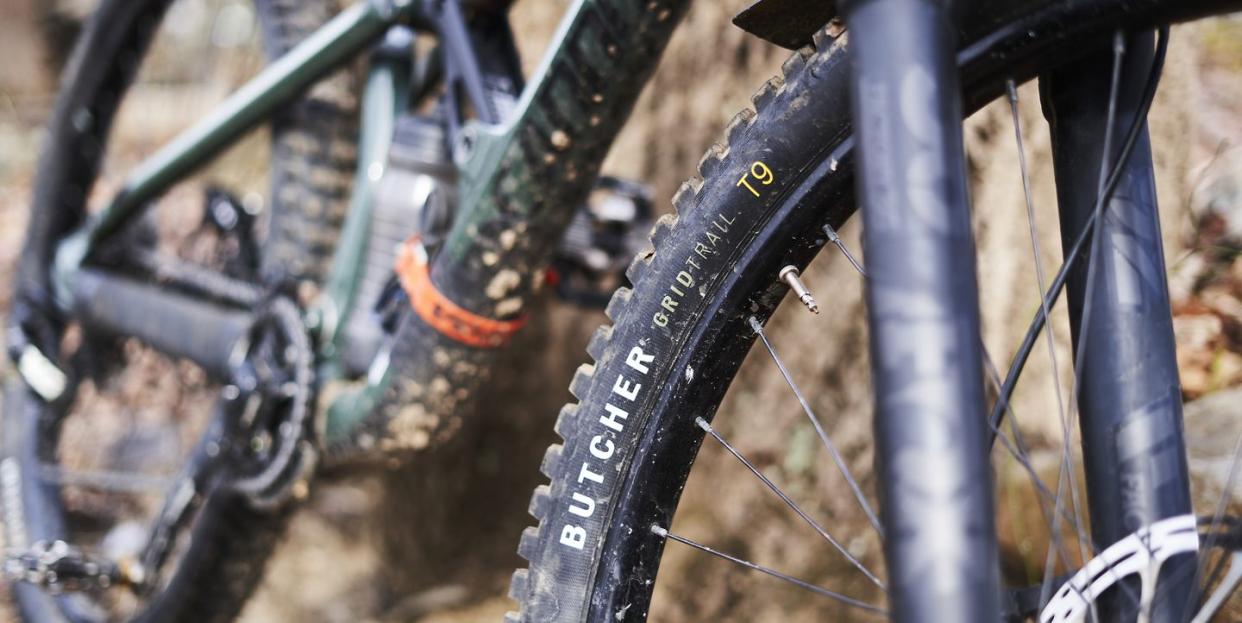
The Takeaway: The Specialized Butcher Grid Trail T9 tires offer confidence-inspiring grip and a comfortable ride—and excels at both traction and speed.
Stays planted on a variety of surfaces
Reduces “ping” off rocks
Uses brand’s updated rubber compound
Price: $60 Weight: 975g (2.3 in.)
Buy Now
Tires may not be the flashiest part of the bike, but for most of us, choosing the right one is a very personal preference based on how and where we ride. When we find one that works for a specific situation, there is often little reason to switch. In fact, doing so might even cause a bit of angst at the thought of the unknown.
So last fall when Specialized quietly updated its tried-and-true treads with new rubber compounds (which replace its old GRIPTON compounds), I had the opportunity to check out the Butcher Grid Trail 2Bliss Ready T9. As hesitant as I was to pull my beloved Maxxis Minion DHF/DHR combo from my daily rider—after all, I’ve been trusting them for at least the last 5 years—to make room for the Butchers, I’m glad I did. Turns out, not only does this tire deserve consideration from anyone looking for new rubber, it also earned a permanent home on my Cannondale Jekyll 29 1. I spent most of my time on the 2.3-inch model, but also ran the 2.6 up front for some comparison testing.
What the Heck is T9?
Simply put, it refers to the tire’s rubber compound and is based on a scale from T5 to T9. The higher the number, the more damping the rubber provides. More damping should translate to more grip on the trail. A lower number denotes a harder, less-damped compound that sacrifices some tacky grip for the sake of longevity and speed. The Butcher Grid Trail uses the grippiest and most damped compound. There is little argument when it comes to what a rider needs for ripping downhill really fast: traction and speed. And this tire excels at both. If you dedicate more time to the downhill scene, opt for the Butcher Grid Gravity 2Bliss Ready T9, which has a reinforced casing for better cornering stability and flat protection.
MY FAVORITE ENDURO TIRES
Initial Impressions
The first thing I noticed was how planted the tires felt when transitioning from soft dirt to rock. They didn’t ping off hard objects like a bouncy ball, and compared to my trusted Maxxis DHF/DHR and Maxxis Assegai setups, they noticeably stuck to the trail better at the same air pressure. At higher tire pressures, in the 25 to 30psi range, the T9 compound seemed to reduce the buzz and bounce that’s commonly associated with tires pumped up that hard.
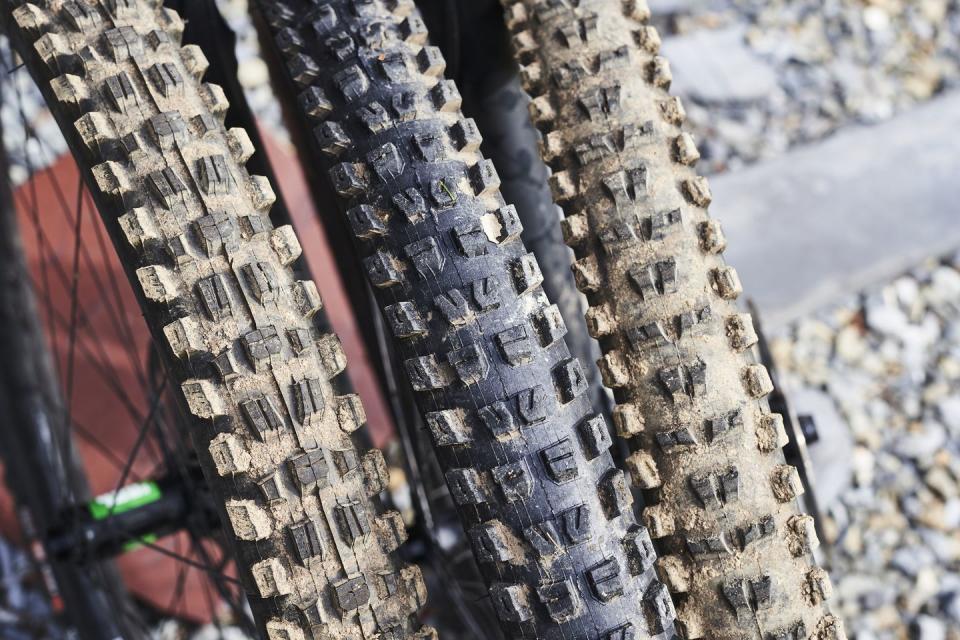
Initially, I rode with my tires at 24 psi up front and 26 in the rear, a pretty conservative setup (though a bit high for a 140-pound rider) that’s safe for full-gas runs on my preferred local “enduro” trail—fast with plenty of tire-killing rocks. To my surprise, the tires performed very well at the high pressures, riding smoother than other rubber I’ve ridden. But when I lowered the pressure to what I normally ride (around 20psi), the tires really came to life. The noticeable reduction in trail buzz was astonishing, as was the solid grip in the turns.
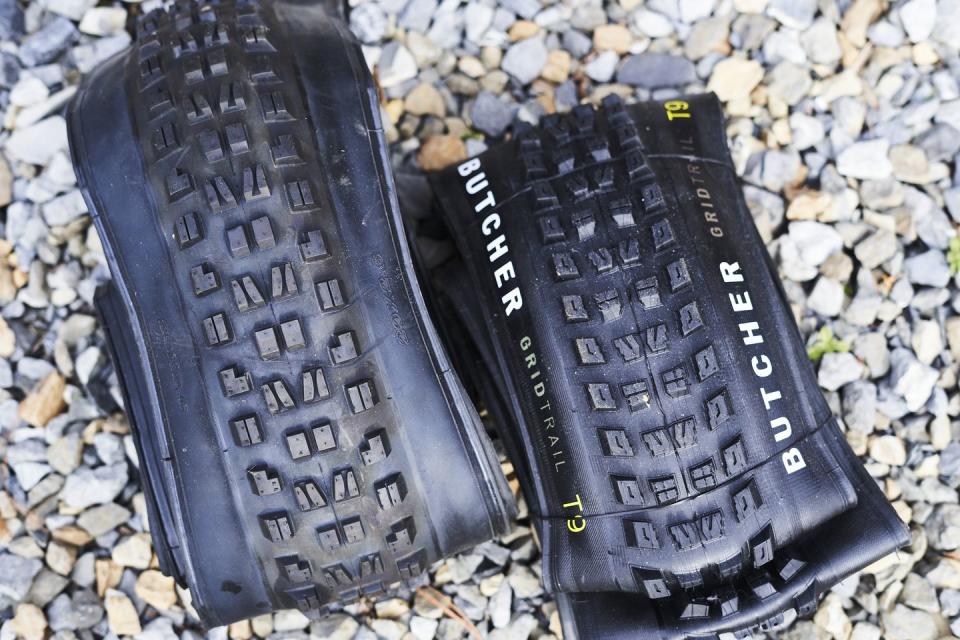
Traction in the turns was admirable and inspired confidence when I leaned the bike over hard and relied on the cornering knobs. Pulling out of turns and righting the bike, I enjoyed consistent and reliable grip in the transition to the tight center treads. Unlike other tires I’ve used in enduro settings, the Butcher Grid Trail T9 felt great when used on both wheels. Despite the superb grip, they don’t feel like Velcro on long transfer stages and the occasional trip up a paved climb. That said, these are not super for climbing. But the combination of grip and protection on downhill runs made it a worthwhile compromise on rocky, Mid-Atlantic trails. My coworker who lives in Durango, where the climbs are much longer, found the trade-off wasn’t worth it for the trails he frequents. As with any off-road tire, conditions on your local trails and the priority you place on downhill versus uphill performance is important to consider.
On the rear wheel the tire felt consistent and reliable while braking, it broke free on demand, and it didn’t slide unexpectedly. When faced with off-camber turns and awkward drops, the tires felt locked into their line. There are a few key sections on my testing grounds that really proved this point. Strava said I was only a tad faster, but having the confidence to know I wasn’t going to slide off the trail allowed me to attack in spots where I used to hesitate. All in all, the Butcher Grid Trail T9 did exactly what I want my tires to do: bite into the trail and keep me rolling really fast.
Long-Term Testing
I threw everything I could at these tires in an effort to find the breaking point. I started with rock- and root-infested trails peppered with hard braking zones and fast corners. Then I made trips to a bike park characterized by blown-out trails littered with sharp shale. There was ample opportunity to find fault.
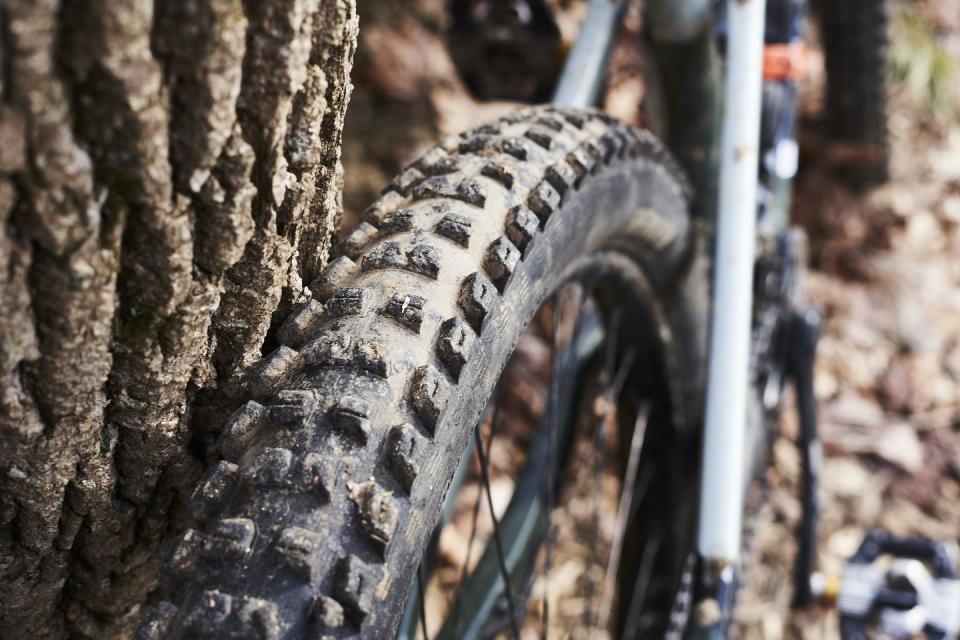
Four months into testing and my Butcher Grid Trail T9s are still rolling strong. I am impressed with both the durability and rate of wear. After plenty of hard miles, the rear hardly shows serious signs of abuse. The same can’t be said for other, grip-focused tires I’ve tried on the same trails. However, when riding hard on extreme eastern Pennsylvania conditions, even the best tires are susceptible to the perils of sharp rocks. A ripped casing ended one such session, but almost two months later the tire lives on with several Dynaplugs decorating the sidewall. I’m looking forward to many more miles of trail-hugging grip and new PRs with these tires.
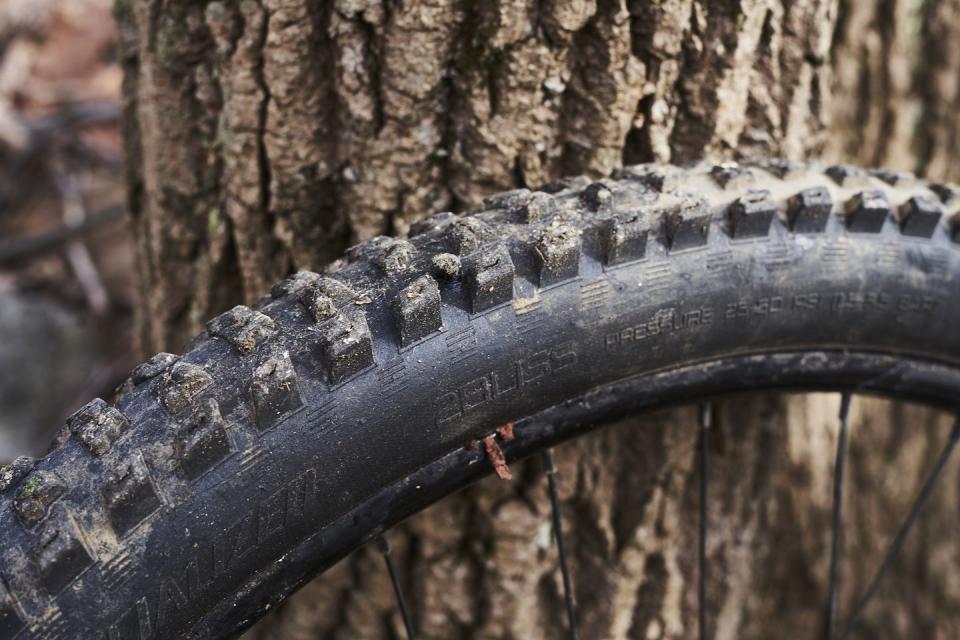
You Might Also Like

